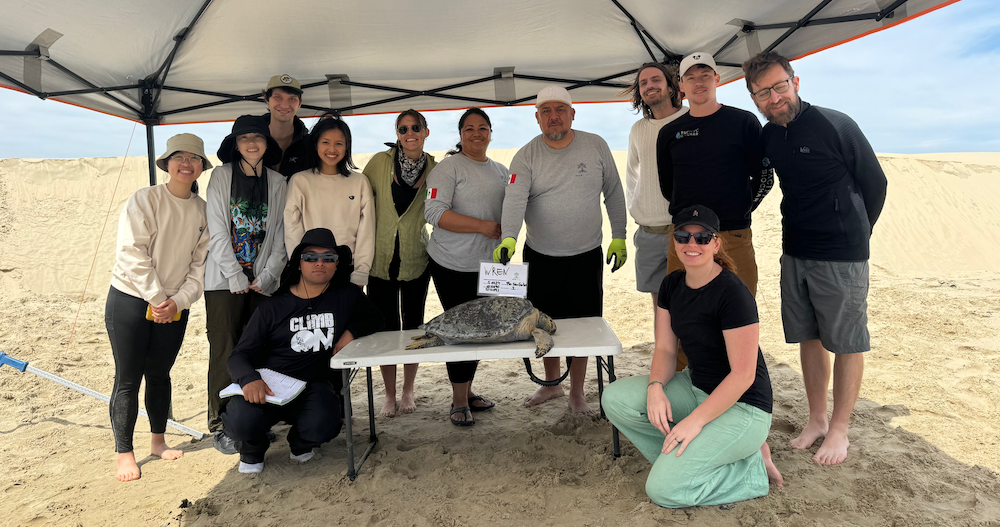Protecting 15,000 hectares of mangrove forests, and seeing conservation in real-time
The Wren team recently had the opportunity to visit Magdalena Bay in Mexico to see the mangrove forests, ecosystems, and community benefits that our subscribers are supporting.

Just the gist
Short on time? Here’s what you need to know for this update:
- 🐋 Seeing mangrove conservation in person — The Wren team recently had the opportunity to visit Magdalena Bay in Mexico to see the mangrove forests, ecosystems, and community benefits that our subscribers are supporting.
- 🌱 Bonus: Growing our knowledge at climate conferences — Our climate portfolio manager, Sophie, recently attended the North American Carbon World conference and is excited to share her learnings.
For more project updates, follow Wren on Twitter and Instagram.
Seeing mangrove conservation in person
Wren members are helping to protect over 15,000 hectares of mangroves in Baja California Sur, Mexico. It’s hard to put that number into perspective, but that’s bigger than the land area of San Francisco!
These mangroves store carbon, house keystone species, and support local livelihoods. The biggest threat to the area is the shrimp farming industry, which often involves the clearing and conversion of these critical coastal forests, leading to habitat loss and ecosystem disruption.
Our project helps to prevent this deforestation, and was our first “blue carbon” initiative on Wren. Our recent project update explains more about blue carbon ecosystems—marine vegetation zones with an impressive capacity to store carbon, helping us to achieve net zero.
The Wren team only had a few short days in Magdalena Bay, but the trip surpassed expectations. We explored the mangroves, climbed sand dunes, measured sea turtles, saw grey whales in their natural habitat, and experienced so many community initiatives—from English classes to environmental education.
Ben, one of Wren’s co-founders, shared, “Without a doubt, this project demonstrates clear carbon benefits, as well as biodiversity and community benefits that shine in their own right.”

Hilary, one of our Wren team members, said, “I came away from the trip with so much admiration, inspiration, and hope for the future of this initiative—alongside the other organizations that we're funding.”

We also had the opportunity to interact with the local community and gain insights into how conservation efforts are directly impacting their lives. The trip truly highlighted the importance of integrating conservation with community development. Wren is so excited to be supporting such an impactful project.
Bonus: Growing our knowledge at climate conferences
Recently, our team member Sophie visited the North American Carbon World (NACW) conference. It’s a cornerstone event for those engaged in the carbon market and climate policy sectors, gathering experts, professionals, and stakeholders to discuss and explore carbon markets and climate policy.
We learned even more about community-first approaches to nature-based solutions, such as mangrove conservation. The shift towards co-creating projects with local communities fosters ownership and responsibility among community members, enhancing the effectiveness and sustainability of conservation efforts.
Ultimately, local and Indigenous groups know their land best and have great ideas on how to take care of it. Recognizing co-benefits, like those offered by our mangrove conservation partners, ensures broader community well-being and support while mitigating risk. We must continue to do so with transparency and a long-term commitment.
That's all for this update! As always, thank you for your support.
— the Wren team 🧡

